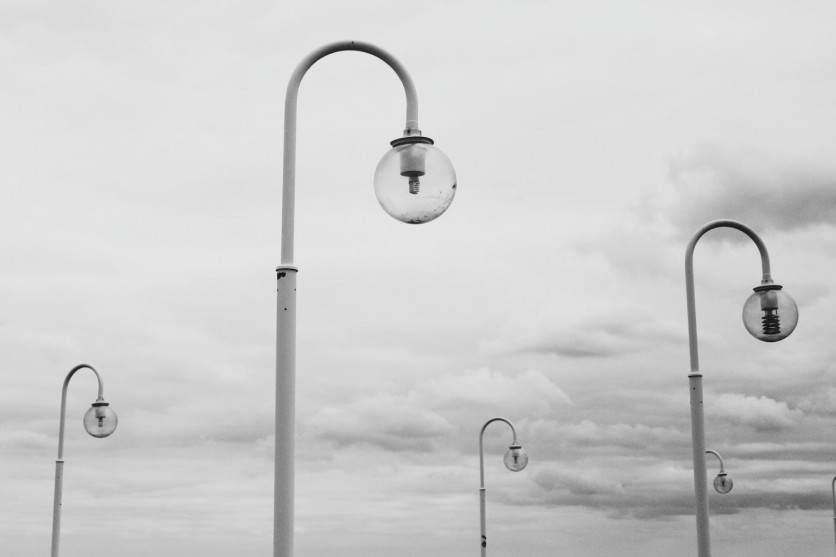
In the last decade, lighting technology has become more efficient, smart, and integrated. As a result, consumers can save money and have a larger amount of control over energy consumption both inside and outside of their homes. Security systems and other smart home integrations are now possible, paving the way for a more connected future. Here are three innovations in the exterior lighting industry that are paving the way for a more efficient, seamless user experience.
1. Energy-Efficient Exterior LED Lighting
Energy efficiency is hardly a new concept, but recent innovations in the lighting space have made it a much easier goal to achieve. Energy-efficient lighting stems from a desire to protect the environment and live more sustainable lives. Luckily, the innovations available to us today are much more effective at doing that than they were a few years ago.
LED (Light Emitting Diode) technology has made its way into pretty much all forms of modern lighting. LEDs aren't new by any means, but they've become increasingly popular for outdoor lighting due to their incredible output. Using LEDs means far less power consumption, and they also last much longer compared to typical incandescent bulbs. For instance, a typical C7 bulb uses 5-7 watts of energy, whereas its LED counterpart only uses 0.75 watts.
Given the significant power-saving characteristics of LED lights, a common use for this technology is permanent home exterior lighting. Exterior lighting companies like Jellyfish Lighting utilize LED technology to provide homeowners with a permanent lighting solution that adds security and removes the hassle of installing holiday lights every year. These LEDs can also easily change colors, meaning homeowners can switch the lighting depending on the season, or even create unique patterns that are programmed into the lights. Lights can be turned on or off at user-specified times, and they don't need to be removed due to their small size and low profile.
In short, the energy efficiency of LED lighting enables many different innovations in the lighting industry. We can expect these small, energy-efficient, and powerful LED lights to continue to show up in a variety of places.
2. Smart Lighting Systems
In terms of interior lighting, smart lighting systems have grown in popularity thanks to numerous improvements in functionality and cost. Smartphone apps make it convenient to change lighting settings and colors, and they can also be used to automatically control lights when certain conditions are met. These interior lighting innovations are now making their way into exterior lights, giving homeowners a plethora of automation features.
For example, motion-activated lighting has become more elegant and customizable with the advent of smart lighting systems. In the past, motion sensors were baked into a lighting system, giving it simple functionality such as switching on when it detected movement. With modern smart lighting systems, we can trigger multiple actions when the sensor detects something. This includes sending a notification to your phone, connecting to a camera to snap a photograph, or even playing an alarm through a connected speaker.
Smart lighting systems can also be used to create unique lighting effects. These are particularly common during the holiday season. LED lights can have their colors and brightness controlled individually, making for some intricate and decorative lighting patterns that can be fully customized.
3. Integration of Exterior Lighting with Security Systems
Modern exterior lighting also has security applications. We previously mentioned the innovations in motion-activated lighting and how it can trigger multiple actions instead of just the light itself. These sensors can be decoupled as well. These intelligent sensors can track more than just movement; they are capable of detecting sound, recognizing human movements, and even tracking heat signatures. They also can feed data into a smart security system which can then trigger exterior lighting.
The use of sensors around the home exterior is similar to geo-fencing. This involves creating a virtual geographical boundary connected to a smart home system. When triggered, the security system can perform various tasks such as controlling the exterior lighting. Instead of switching on exterior lighting in a particular area of the home, it could turn on several lights around the perimeter of the home as a deterrent. It could even trigger indoor lights to mimic the presence of someone inside.
These exterior lights can also be paired with security cameras to provide a better picture or recording which can be used to identify the would-be thieves. This is particularly useful at night, especially if there are areas around the exterior of your home that are shrouded in darkness due to the position of foliage.
The Future is Bright for Lighting Technology
The lighting industry has undergone remarkable advancements in the past decade, revolutionizing exterior lighting solutions. The integration of energy-efficient LED technology has not only allowed for significant power savings but also provided homeowners with a more permanent and versatile lighting solution. As we move forward, these innovations are paving the way for a more efficient, connected, and secure future, where lighting plays a crucial role in enhancing our lives and protecting our homes.
ⓒ 2025 TECHTIMES.com All rights reserved. Do not reproduce without permission.




